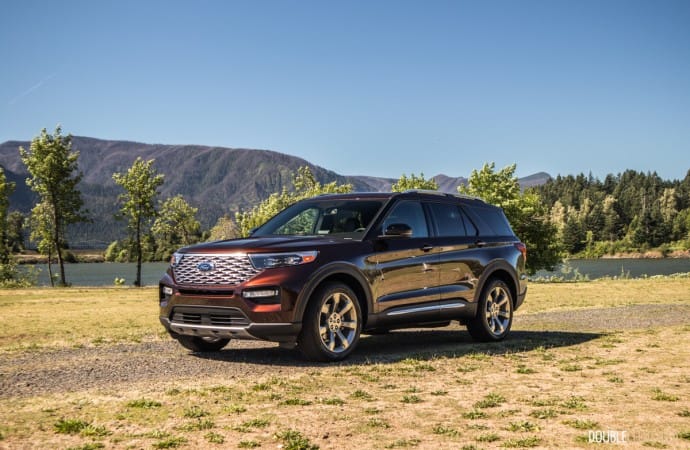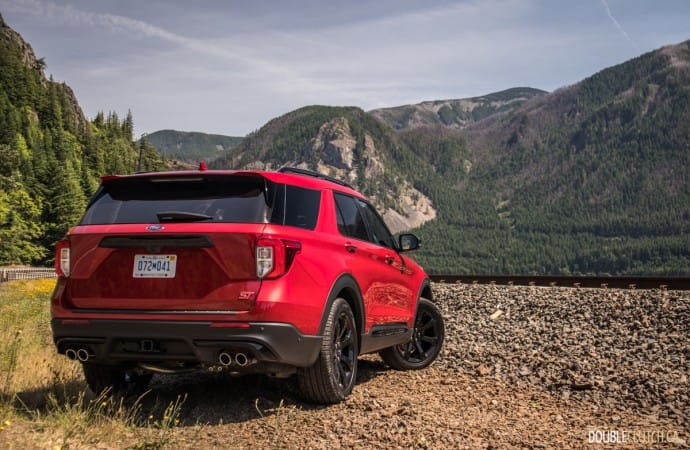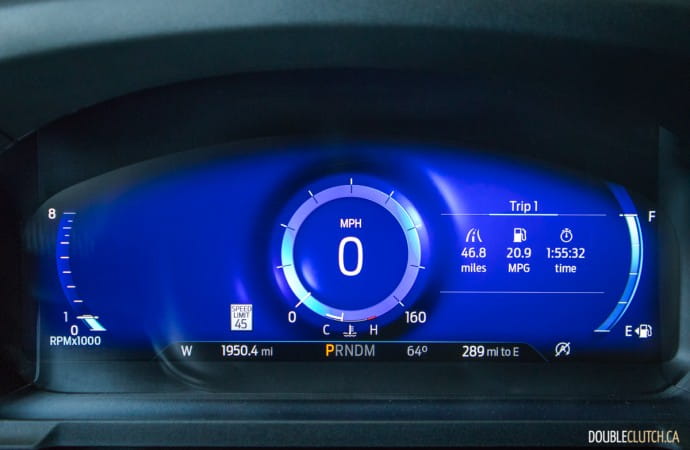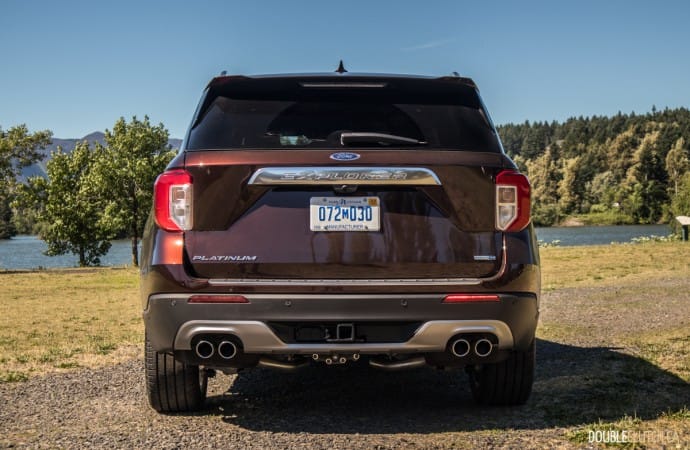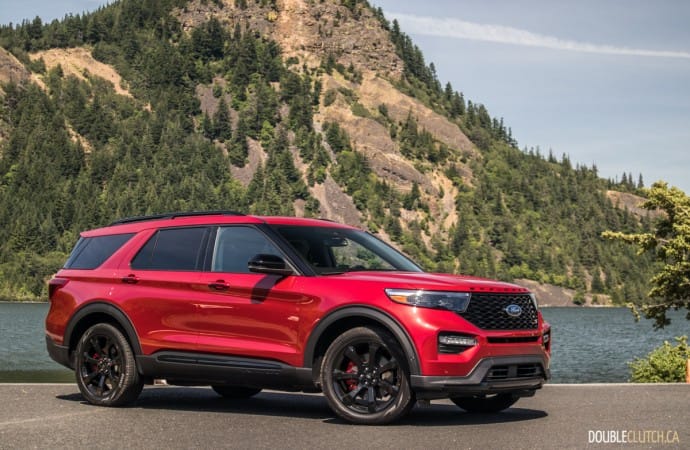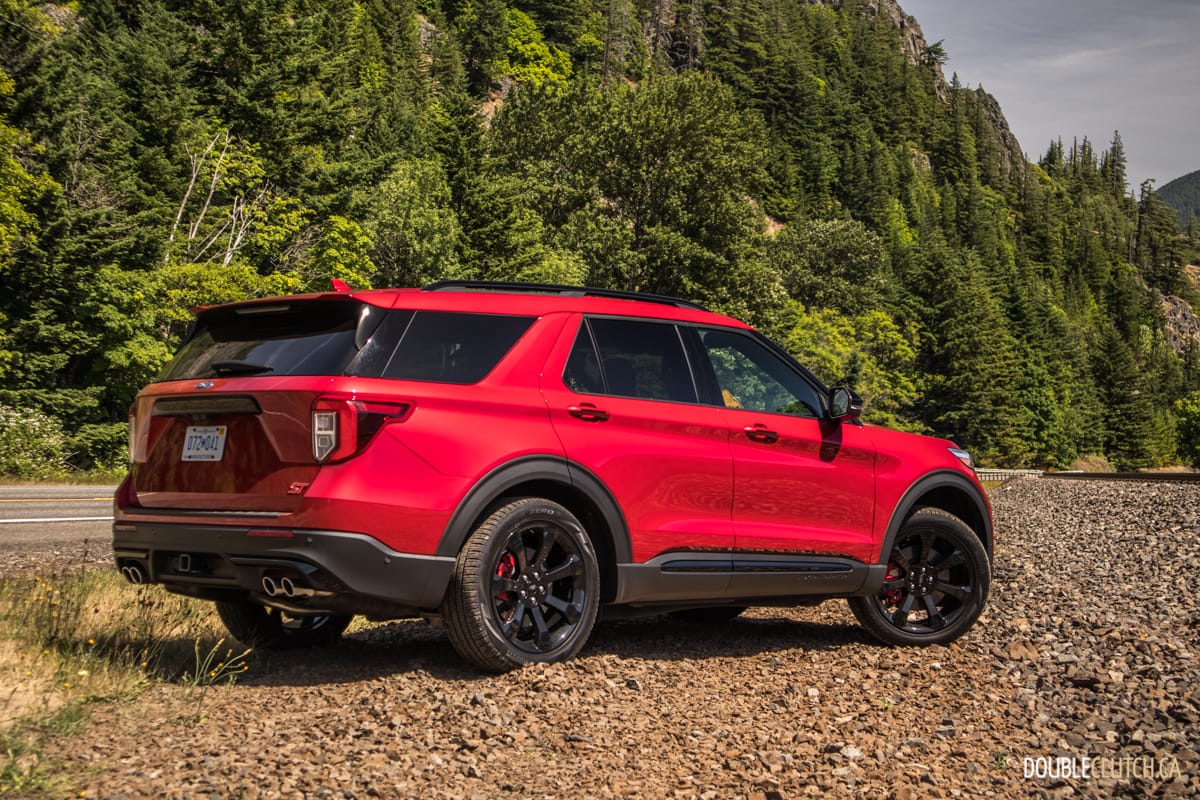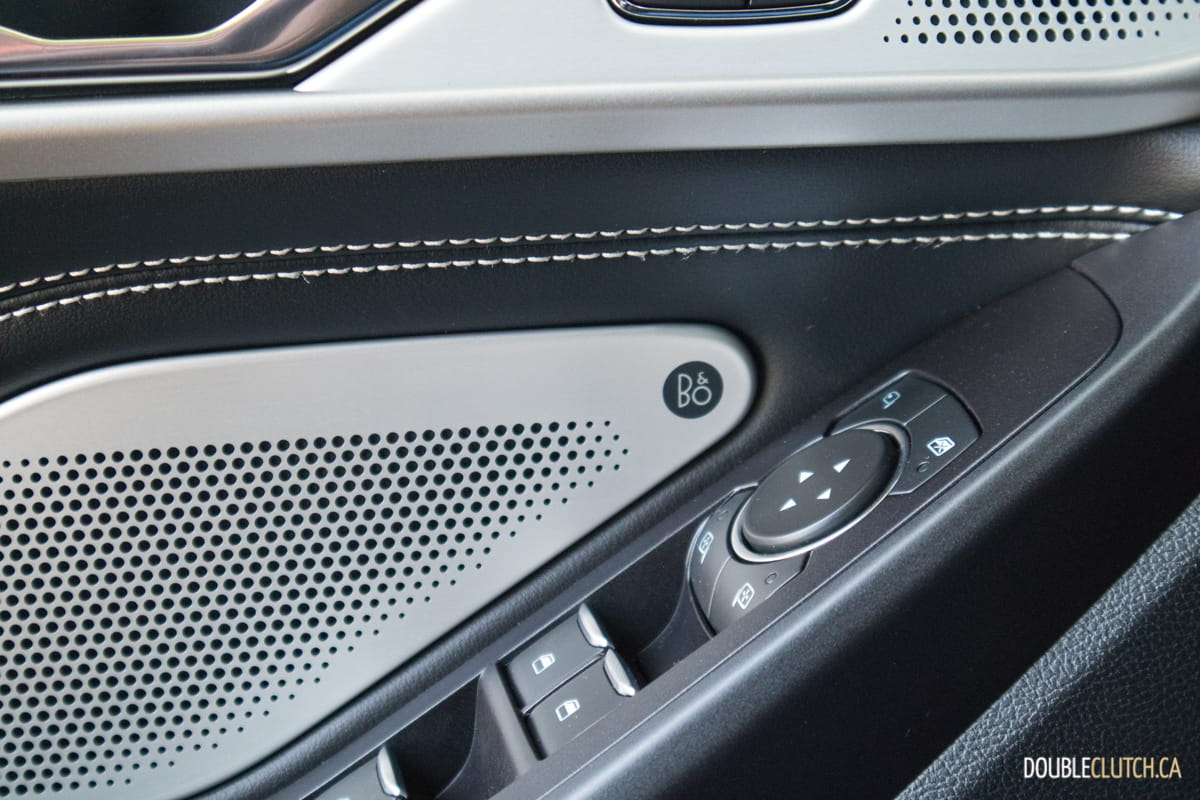PORTLAND, OREGON – The Ford Explorer was one of the vehicles that paved the way for the crossover and sport-utility vehicle as we know it today. If you haven’t seen that crossovers have effectively taken over the automotive landscape here in North America, you may want to peek out from that rock you’ve been living under. Dating back to 1990, the Explorer has carved a path to success using a simplistic formula and rugged good looks. All new for this year, we flew to Portland and the surrounding area to sample the 2020 Ford Explorer, ST, and hybrid models.
To further differentiate itself from the smaller Escape and EcoSport models, the new Explorer is based on a new rear-drive based platform, and can be had with a variety of powertrains including a boosted ST performance model. The new model is a sharp looker like the model it replaces, and has extremely handsome proportions. Unique accents separate the models, including up-sized wheels and sport touches on the ST model.
The powertrain lineup starts with the 2.3L EcoBoost four on most models, with 300 horsepower and 310 lb-ft. of torque. A 3.0L twin-turbo V6 is equipped on the Explorer Platinum, and the ST gets a tuned version of it offering 400 horsepower and 415 lb-ft. of torque. All models get a 10-speed automatic transmission, which we found to be the best application yet of this gearbox. Regardless of trim level or engine, the Explorer drives very smoothly on the road with immense confidence and poise. All Canadian models come with all-wheel-drive as standard equipment.
As with other EcoBoost motors, there is some turbo lag off the line, but the 380-horse 3.0L on the Platinum is more motor than any buyer will need. We spent a good chunk of time in the performance-oriented ST, and dare I say it’s a slightly cheaper alternative to the Dodge Durango SRT (reviewed here). You feel every bit of the 400 horses under the hood, and the response is sharp. In Sport mode, everything sharpens up even more, with more aggressive throttle response and sporty transmission tuning.
The ST starts at $59,099, with an available ST Street Pack at $1,500. This adds 21” wheels, performance brakes, and red brake calipers. A $1,500 Premium Technology Package adds multi-contour seats with massage, 10.1” touchscreen infotainment, and a 14-speaker B&O sound system. Our American neighbours down south also get an optional Track Pack that’s unavailable in Canada. The ST isn’t exactly cheap, but right in line with the Durango R/T and a significant amount less than the Grand Cherokee SRT.
New for 2020 alongside the ST is an Explorer Hybrid, with an exclusive 3.3L V6 coupled to an electric motor. It offers 318 horsepower combined and a peak 322 lb-ft. of torque. The all-wheel-drive hybrid drives extremely well and is also capable of light off-roading, with minimal compromises. This powertrain adds about 250 pounds of added weight to the ST and Platinum models, and it’s a bit noticeable as it carries itself down the road. All in all, every version of the Explorer drives extremely well, with exemplary ride quality that’s almost German and a generous step up from the model it replaces.
Explorers equipped with the Terrain Management System get seven drive modes altered by a selector on the console. This will adjust the SUV’s characteristics to suit the environment from Eco to Sport, and everything in between such as Trail, Snow and Sand, and Tow/Haul. We sampled the regular version as well as the Hybrid on a mild off-road course and were impressed with the ruggedness, including the ability to traverse up to 18” of water.
Perhaps the most obvious upgrade to the Explorer is the interior, which centers around a new 10.1” touchscreen in portrait orientation. It runs a completely new version of Ford’s SYNC 3 interface and offers everything from infotainment to on-board diagnostics. It features Apple CarPlay, Android Auto, Waze, and much more. The screen is an upgrade over the standard eight-inch landscape one offered, and has a learning curve to it. Personally, I’m not a huge fan of the portrait orientation, but the system itself is quite good.
The interior itself is a decent space to spend time, with three rows of seating and second row captain’s chairs ($500 option) in the examples available for testing. Materials are adequate, and there are upscale bits including nice matte speaker grilles on the B&O sound system, but some very obvious plastic bits are present. It’s fine at the XLT’s price point, but spending $65,000 on the Platinum would have me whining a bit about the hard plastic door panels. A nice touch is the 12.3” digital gauge cluster that can be customized in a plethora of ways.
Driver and passenger space is more than adequate, with the third row being able to fit adults for short jaunts. The cargo area will hold 515L of stuff behind the third row, and this expands to almost 1,360L with the third row folded. Should you choose to fold down the second row seats as well, 2,486L will be made available. Towing capacity with the 2.3L EcoBoost and Class III Trailer Tow Package is 5,300 pounds.
Ford’s Co-Pilot360 active safety suite is standard on all models of the Explorer. The tech that’s standard includes Pre-Collision Assist, automatic emergency braking, blind spot information, lane keep assist, rear-view camera (with built-in cleaner!), and automatic high beam assist. Optional tech includes Post-Impact Braking, Evasive Steering Assist, and more. The new adaptive cruise control system can detect speed limit signs using a camera, and adjust your cruising speed accordingly. It even allows for an adjustable “tolerance” setting when driving a certain percentage over the speed limit.
Fuel efficiency is rated at 11.6L/100km city and 8.7L/100km highway for the 2.3L model, for a combined 10.3L/100km. The 3.0L turbo models are rated at 13.3L/100km city and 9.8L/100km highway, for a combined 11.8L/100km. All Explorers are rated to run optimally on regular 87-octane fuel, however the ST will only make its maximum power output on 91-octane premium. Running it on regular will cause the engine to run at a detuned setting.
Canadian pricing starts at $45,199 for the XLT model, and $59,099 for the ST. The volume-selling Limited will be $52,199, with the Limited Hybrid starting at $57,199. The top-trim Platinum starts at a hefty $64,599. Relevant options include the Cold Weather Package on the XLT that offers first and second row heated seats, heated wheel and windshield wiper de-icer, at $1,300. The advanced Co-Pilot360 suite on the XLT adds the adaptive cruise control, evasive steering assist and voice-activated navigation for $1,000.
The 2020 Ford Explorer sits in a great position in the market, going up against bigwigs like the Honda Pilot (reviewed here), Chevrolet Traverse and Dodge Durango. It currently offers the most versatile lineup and the most modern tech. The lineup has lost its naturally aspirated motor that has proven to be the most reliable in the long run, but the new EcoBoost drivetrains are peppy, smooth, and reasonably efficient. As it stands, the 2020 Explorer has handily earned itself a podium finish in the red-hot three-row crossover segment.

